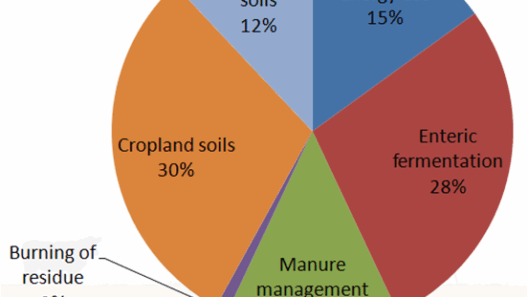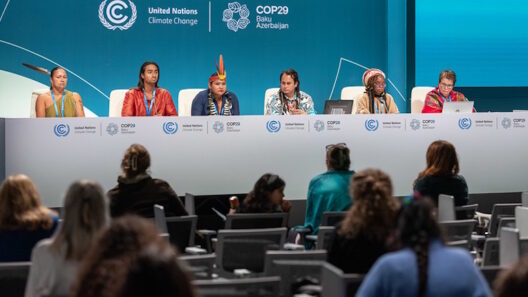Black carbon, a pervasive and insidious environmental pollutant, is a particular form of particulate matter emitted from incomplete combustion of fossil fuels, biofuels, and biomass. It is composed predominantly of soot, a by-product of burning carbon-rich materials. As a contributor to global warming, black carbon warrants a comprehensive examination of its origins, impacts, and potential mitigation strategies.
To understand black carbon, it is essential to delve into its sources. This pollutant is chiefly generated by combustion processes, including vehicle emissions, industrial activities, household heating, and agricultural burning. Each of these sources contributes to a complex web of atmospheric interactions. Unlike CO2, which remains in the atmosphere for centuries, black carbon has a relatively short atmospheric lifetime of days to weeks. However, its potency as a warming agent is alarming; it has the ability to absorb sunlight and has been found to be up to 1,500 times more effective than carbon dioxide in terms of heat absorption on a per-particle basis.
The environmental ramifications of black carbon are significant. When black carbon settles onto snow and ice, it reduces the albedo effect, which is the reflection of sunlight off Earth’s surface. This leads to accelerated melting of glaciers and polar ice caps, contributing to rising sea levels. Furthermore, black carbon exacerbates air pollution and can have dire health effects, particularly in urban areas where concentrations can be exceptionally high. Respiratory diseases, cardiovascular problems, and even premature death are just a few consequences of exposure to this hazardous particulate matter.
As global temperatures continue to rise, understanding the contribution of black carbon becomes ever more critical. Unlike carbon dioxide, which is often discussed in the context of long-term climate change pathways, black carbon’s immediate warming effects present a unique opportunity for climate mitigation. Reducing black carbon emissions could yield rapid climate benefits. By implementing cleaner combustion technologies, transitioning to sustainable energy sources, and enforcing stricter emissions regulations, countries can address this pressing issue promptly.
The resolution of black carbon emissions requires an integrated approach that combines legislation with community engagement. Policies that phase out solid fuels used for cooking and heating, particularly in developing countries, could significantly decrease emissions. Additionally, encouraging the adoption of cleaner cooking technologies, such as electric or bioethanol stoves, can make strides toward ameliorating indoor pollution, which disproportionately affects women and children.
In urban settings, promoting public transportation, electric vehicles, and stringent regulations for industries can substantially reduce vehicular and industrial black carbon emissions. Moreover, urban forestry initiatives, which involve the planting and maintenance of trees in city landscapes, can help mitigate pollution absorption and improve air quality. Trees naturally filter air pollutants, including black carbon, while promoting overall public health.
Beyond terrestrial initiatives, international collaboration is paramount. Many countries have committed to addressing black carbon through the Climate and Clean Air Coalition (CCAC), which is a partnership aiming to reduce short-lived climate pollutants. These efforts underscore the necessity of integrating black carbon reduction strategies into broader climate action plans to achieve meaningful progress.
While the challenges posed by black carbon are formidable, the potential for impactful solutions is within reach. Education and awareness-raising can mobilize communities, fostering a grassroots movement against black carbon emissions. By informing individuals about the sources and impacts of black carbon, communities can cultivate a sense of responsibility and urgency. Workshops, informational campaigns, and school programs can engender a collective effort toward reducing emissions and improving air quality.
The role of scientific research cannot be overlooked either. Continuing to study the atmospheric behaviors and health impacts of black carbon will enhance our understanding, guiding policy decisions and innovation in technology. The creation of advanced monitoring systems for black carbon can aid governments in tracking emissions and enforcement of regulations. Further, investment in alternative fuels and cleaner technologies could lead to breakthroughs that dramatically reduce black carbon output.
Ultimately, the conversation surrounding black carbon should not be isolated from broader environmental dialogues. It is intertwined with discussions about energy production, transportation policies, urban planning, and public health. Each of these areas offers avenues for addressing black carbon emissions, revealing the interconnectedness of environmental issues. By recognizing that black carbon is but one piece of a larger puzzle, we can strategize comprehensive frameworks that tackle several environmental crises simultaneously.
In conclusion, black carbon is not merely a pollutant; it is a catalyst for climate change that necessitates immediate action. Its effects on global warming are exacerbated by its presence in urban settings and its ability to accelerate ice melt. Targeted measures to reduce emissions, combined with a concerted global effort, can significantly alter its trajectory. Governments, industries, and individuals must recognize the threat posed by black carbon and work collaboratively to forge pathways toward a cleaner, more sustainable future.








